I took a quick look at the Hasselblad H2D-39 a few days ago; that’s the only CCD camera for which I’ve analyzed the read noise. The H2D-39 cuts off the left half of the read noise histogram when making dark-field images, so it’s not ideal for these tests. The Leica M9 does not. In fact, unique among the cameras I’ve tested in the last couple of weeks, the black point changes with ISO setting, approximately doubling each time ISO does.
With no further ado, here are the read noise vs low pass filter size curves for the five whole-f-stop ISOs of the M9:
Now let’s see what they look like referred to the input of the pre-ADC gain stage:
The M9 read noise is much higher than it was for the CMOS cameras that I tested earlier. It looks like you shouldn’t ever use ISO 2500. But we knew that from earlier testing.
If the read noise were white and Gaussian, the sensor-referred plot would look like this:
Here are the ratios of the two sets of actual curves to the ideal case:
The M9 low-frequency content of the read noise is good-to-average. There appears to be no significant bias towards either the vertical or the horizontal direction. However, the amount of read noise is extremely high, even if you stay away from ISO 2500.
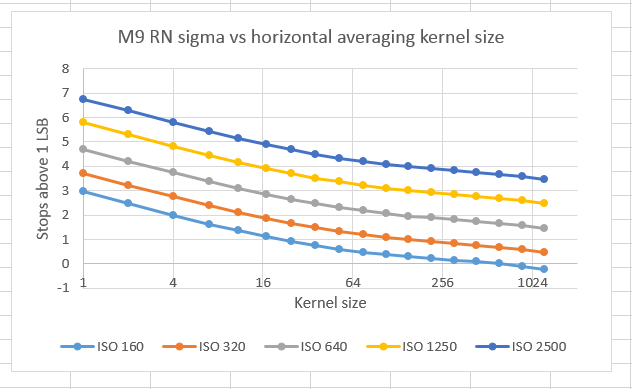
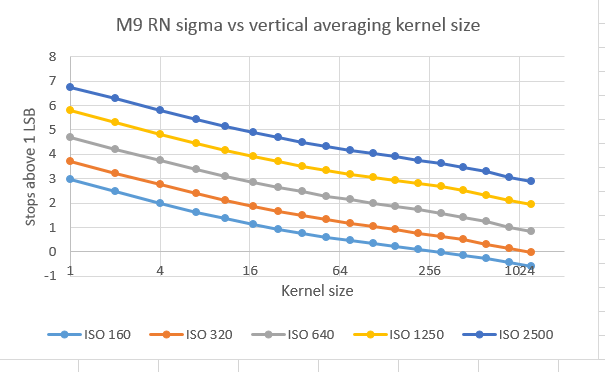
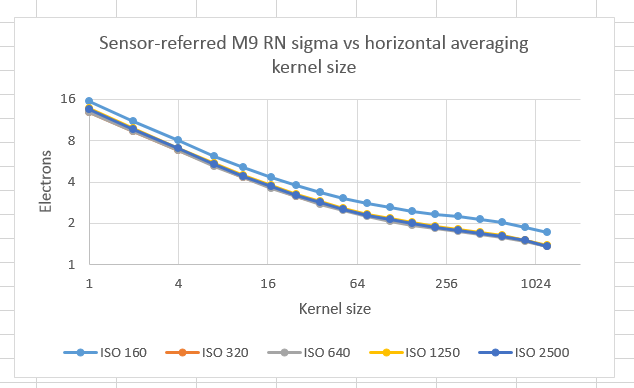
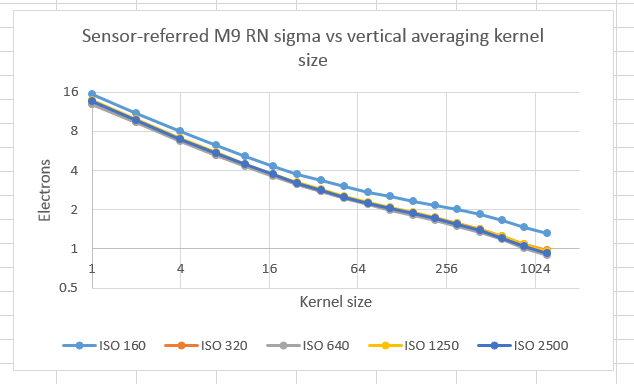
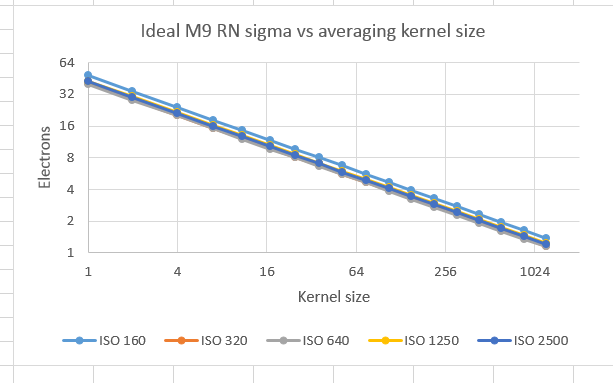
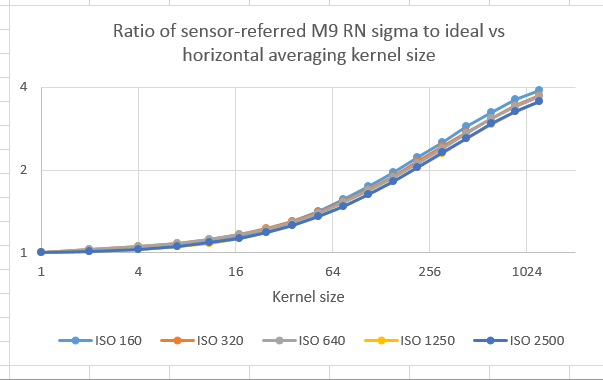
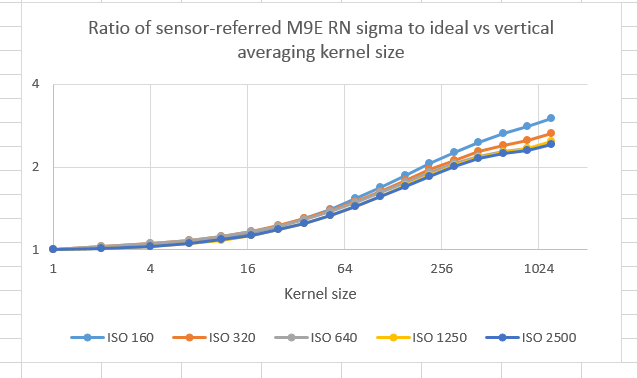
Leave a Reply